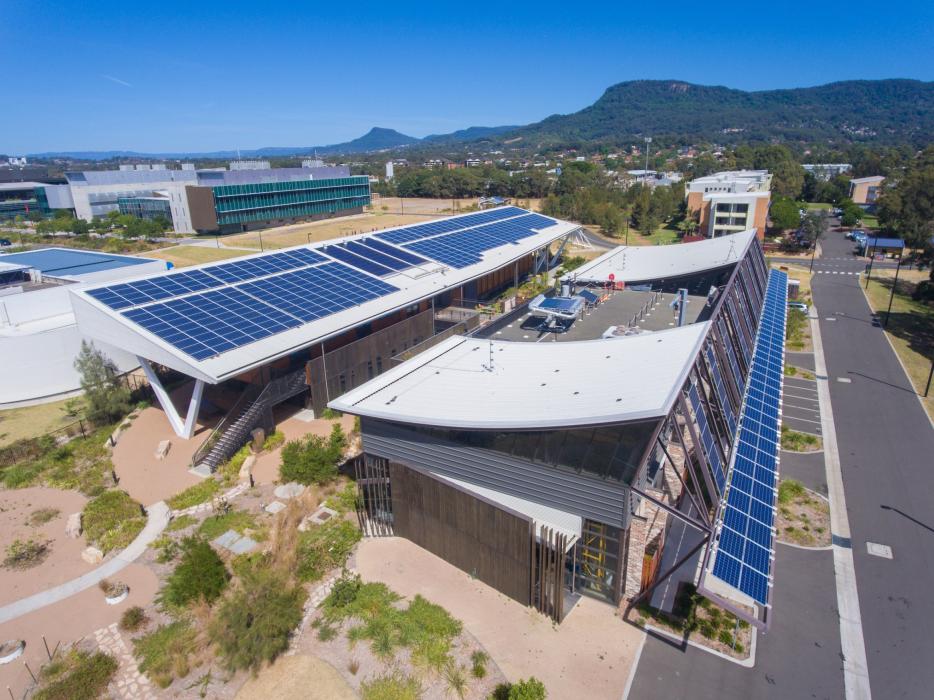Why engineers should embrace the Living Building Challenge

The Living Building Challenge has be referred to as the “Everest of green building rating tools” and it’s not a bad analogy.
Certification is likely to be an uphill battle with the elements against you, but getting to the top will be exhilarating and transformative. But unlike an ascent of Everest, which is life changing, LBC is world changing.
LBC represents a shift in thinking that poses the question “what if every single act of design and construction made the world a better place?” In the face of a climate and biodiversity emergency, building engineers must recast themselves as champions of a living planet and this is exactly why they should embrace LBC.
Developed in 2006, LBC is a philosophy, advocacy tool and certification program for new and retrofitted buildings, starting in North America and then expanded worldwide by the International Living Future Institute.
LBC is a call to design a building which, like a flower, gets its energy from the sun, harvests all the water it needs from the precipitation captured on the site, is adapted very specifically to a place, can’t pollute the soil, becomes nutrients for the next cycle at the end of its life, provides habitat for other life, and is beautiful.
If you are a building engineer, there is real magic in this definition as it disrupts conventional thinking to catalyse new thinking. This new thinking is rich in possibility, bringing a “living systems” understanding to engineering, radically changing the way we collaborate and fundamentally reshaping our industry.
The big shift required for any LBC project is to think in terms of flows – of materials, energy, water and nutrients. Engineers traditionally design for maximum capacity but LBC calls them to design also for resource flows, which need to be as low impact and circular as possible.
This starts with defining the system and its boundaries. These kinds of system maps are not generally defined for most building projects, and that limits the potential for integrated solutions. Once the system is defined then estimates can be developed for business-as-usual flows. This is where the “challenge” aspect of LBC really becomes apparent as engineers need to find ways to largely eliminate negative impacts by targeting energy positive, carbon neutral, water balanced, zero materials toxicity and nature positive outcomes.
By imposing these performance boundaries, necessity becomes the mother of invention and the certification becomes a catalyst for creativity and innovation. Structural engineers can become curators of socially and ecological material supply chains, mechanical and electrical engineers can lead the way on energy systems that are carbon neutral and climate resilient, hydraulic and civil engineers can view the water system as a whole and design for conservation and circularity.
What is readily apparent once you start working with LBC is that it is as much about changing hearts and minds as it is about world leading sustainable buildings. And that change starts with the design team, which must take on collaboration and co-design as if their lives depended on it.
The walls between engineering disciplines, between client and project team, between project team and community, must come crumbling down. Achieving integrated design solutions just isn’t possible without an integrated team that promotes open communication, workshops the issues and co-designs the solutions.
An integrated design process is essential, bringing everyone together early to develop direction, iterate ideas, build trust and create accountability. All this talking and workshopping has fallen away from most engineering scopes in the face of time and cost pressures. LBC changes the game, so that if you are not collaborating closely in this way, costly mistakes are likely to be made and the project is at risk of failing to meet performance targets based on its first 12 months of operation. Engineers need to get comfortable with not having all the answers, and realise that the best engineering solutions come when we put our heads together and collaborate.
Our buildings, even the sustainable ones, are destroyers of nature, but LBC envisages buildings as a force for good, transforming communities, industries, policies and value systems. While building engineers are some of the world’s best problem solvers, leadership has been lacking on ecological issues and climate action. The aspirations of an LBC project are such that they bump up against the engineering conventions and practices that hinder the design and construction of living buildings, like outdated regulation, clunky policy, lack of transparency and “that isn’t the way we do things”.
You can’t achieve certification by folding in the face of these obstacles, rather there is an expectation that engineers and their project colleagues are tenacious in overcoming barriers and fundamentally reshape the building industry so that living future building projects can become the norm.
There are many examples of LBC projects that have brought about small and large changes in many areas including water policy, materials transparency and land management.
This is the decade to deliver on so many ecological fronts and that means it’s also the decade to reinvent the role of building engineers as leaders, innovators and change agents.
In the face of these complex challenges, we need new frameworks to guide our engineers and our engineering. Engineers should welcome and embrace the LBC on every project, if not for certification then at least as a set of future focused principles that unlock engineering potential.
Don’t wait for your clients to ask for it, take it to them and ask why not?
Article first published by The Fifth Estate
Photo credit: Living Certified Sustainable Buildings Research Centre l University of Wollongong
